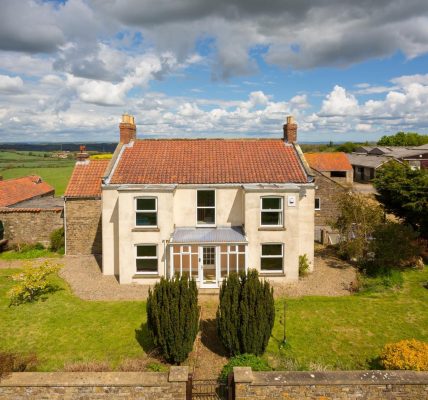How the census has changed and what it can tell us about the past and our lives today
When you fill in a census form, you aren’t only accounting for everyone in your household. You’re also doing your bit for history.
The census happens every 10 years and lets us know about all the people and households in England and Wales. It’s been running for 200 years, although no census was taken during the Second World War.
Historians often use the census in their research, and sometimes their discoveries are surprising. Bridget Bennett, Professor of American Literature and Culture at the University of Leeds, was excited to find what she calls a “guerrilla inscription” in the 1851 census.
While researching the life of Wilson Armistead, a Quaker merchant from Leeds, she saw that he’d used the census form to protest against slavery in the United States.
Armistead was an abolitionist and author who hosted the African American fugitives Ellen and William Craft at his house in Leeds in 1851, while they were on a lecture tour of the UK.
In what Prof Bennett terms “a typically quiet (yet bold) abolitionist act”, Armistead ensured his guests were recorded in the UK census as fugitives. His protest, widely covered in the press at the time, later passed into obscurity. “What I saw in the census was something unique to the census of that year,” says Prof Bennett.
“In the column under occupation or status he names William Craft as carpenter and names Ellen as his wife, but above that are the words ‘fugitive slaves’. That’s just extraordinary because there’s simply no reason for that to be there at all. And I’ve checked out census entries for other fugitive slaves who were in the country, and none of them said that.”
Armistead has largely been forgotten, although Prof Bennett is part of a campaign to have a blue plaque erected to him in Leeds. She also wrote an academic paper about his protest, entitled “Guerrilla Inscription: Transatlantic Abolition and the 1851 census”, published in July last year.
Although the census is avowedly apolitical, it sometimes runs up against the politics of the day. You can see evidence of this in York, thanks to a blue plaque put up on Coney Street by York Civic Trust in 2019.
While Wilson Armistead marked his census form, Suffragettes urged women to evade the census of 1911. The rallying call by Emmeline Pankhurst and others was, “If women don’t vote neither should they be counted.”
The plaque honours the women who were not counted, and marks the location of the York headquarters of the Women’s Social and Political Union (WSPU).
Among the avoiders was teacher Annie Coultate, who set up the York branch of the WSPU in 1911. The census enumerator wrote on the form for her address at 33 Melbourne Street that she “was away from home during the night of the Census, but was most probably enumerated amongst a number of Suffragettes who passed the night in a room in Coney St, York, with the object of evading the Census”.
Dr Jessica Meyer, associate professor of Modern British History at the University of Leeds, has just finished a five-year research project working on PIN 26, the personal pension files of disabled ex-servicemen from the First World War.
Working with the National Archives, Dr Meyer has been able to cross-reference the type of work listed in ex-servicemen’s files to assess the impact of war disability on gender, work and care provision.
Personal pension files were created for each man who applied. These included their military and medical records and all the paperwork around whether they received a pension and treatment for disability, and they were renewed each year.
“Some of these files last from 1919 up to the latest disclosure in 1986,” says Dr Meyer. “I’m a gender historian and a historian of masculinity, and I’m interested in what sort of care men received when they were disabled, and that relates in a lot of ways to what sort of work they were able to do.”
Dr Meyer is excited that she will soon be able to read the 1921 census online. To date, she has been using the census report given to her by archivists at the National Archive.
One of the men in her study is Arnold Loosemore, a farm labourer from Sheffield. He became a sergeant during the war, earning the Victoria Cross, and was then very badly wounded.
“He retrains as a poultry farmer,” says Dr Meyer. “The thing I want to check with the census is that he loses his leg and contracts TB and spends quite a lot of time in hospital between 1920 and 1924 when he dies. I’d be interested to know where he’s listed in the census. If he’s listed in the TB hospital or if he’s listed at home because he actually dies at home.”
Dr Meyer’s concern with the military past chimes with Census 2021, as for the first time there is a question about service in the armed forces. Answers to this question will allow a fuller record to be kept of ex-servicemen and women.
Also new this time will be voluntary questions for those aged 16 and over on sexual orientation and gender identity. Last week, Fair Play for Women argued at the High Court that this question unlawfully allowed “self-identification” as male or female. The judge ordered that the guidance for these questions should be changed.
The ONS said most people will not need help to answer the sex question. “In line with the court’s order to grant interim relief we have amended this guidance to advise they use sex as recorded on a birth certificate or gender recognition certificate.”
Census 2021 will also include questions about your age, work, health, education, household size and ethnicity. The information gathered will be available to local councils, health authorities and others within a year or so. Names and personal information will remain hidden for 100 years.
Leeds City Council said that accurate census data was vital to the work it does. “It helps us to better understand the communities we serve. It highlights areas of growth or change; and helps shape strategies for transport, education, health and social care, housing, planning and climate change.”
As the census aims to record a true picture of our society, the questions adapt to the times. For instance, households used to be asked if they had an outside toilet. That question ran from 1951, when nocturnal dashes to the lavatory will have been chilly, all the way to centrally-heated 1991.
According to census data from 1951 to 1991, the number of people who had “exclusive use of a bath” in Leeds rose sharply. In 1951, 65,500 people had no access to a bath; by 1991, that figure had dropped to 222. Reassuringly fragrant news all round.










